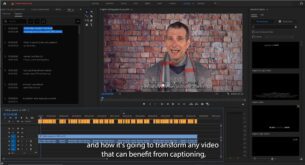When YouTube sneezes, the codec world catches the ‘flu, even if the cause of the sneeze was totally innocuous. So it was with YouTube’s announcement that they will show 4K video encoded with VP9 at CES with hardware partners including Sony, Intel and many others. From the coverage in the press, which extended all the way to CNN, you would think that this meant a death knell for HEVC. Even a cursory analysis reveals that it’s a pretty meaningless non-event; very much like the initial WebM announcement.
I discuss this on StreamingMedia.com in an article entitled YouTube and VP9: A Made-for Press-Release event. In a nutshell, I argue that, of course, the TV vendors signed on, they need to sell 4K TVs, that there’s not enough support for VP9 in the browser/mobile space for any publisher, besides YouTube, to deploy VP9, at any resolution. Just like with WebM.
There’s another interesting parallels to WebM. Specifically, when WebM was announced on May 10, 2010, the H.264 patent group managed by MPEG LA was dithering about whether to charge royalties for H.264-encoded video distributed for free over the Internet. On August 26, 2010, MPEG LA announced that they would never charge royalties for free Internet video. While they’ve denied that the two events were related, the timing seems to beg otherwise.
Fast-forward to today, and it’s clear that the HEVC IP owners have been procrastinating about forming the group and announcing royalty policies as if they were the only game in town. At the very least, the latest VP9/YouTube/4K brouhaha will serve as a wakeup call to these rights holders, who I’m sure have been watching the endless new stories with a mix of disbelief and strong apprehension. Take the hint, boys and girls, it’s time to go about the business of launching a codec. Tick, tick, tick.
In the end, the most meaningful contribution that WebM made, in my mind, was getting MPEG LA off the dime regarding content-related H.264 royalties. I’m guessing (hoping) we’ll be saying the same about VP9/4K/YouTube and the formulation of an HEVC patent group and announcement of royalty policies.
 Streaming Learning Center Where Streaming Professionals Learn to Excel
Streaming Learning Center Where Streaming Professionals Learn to Excel







